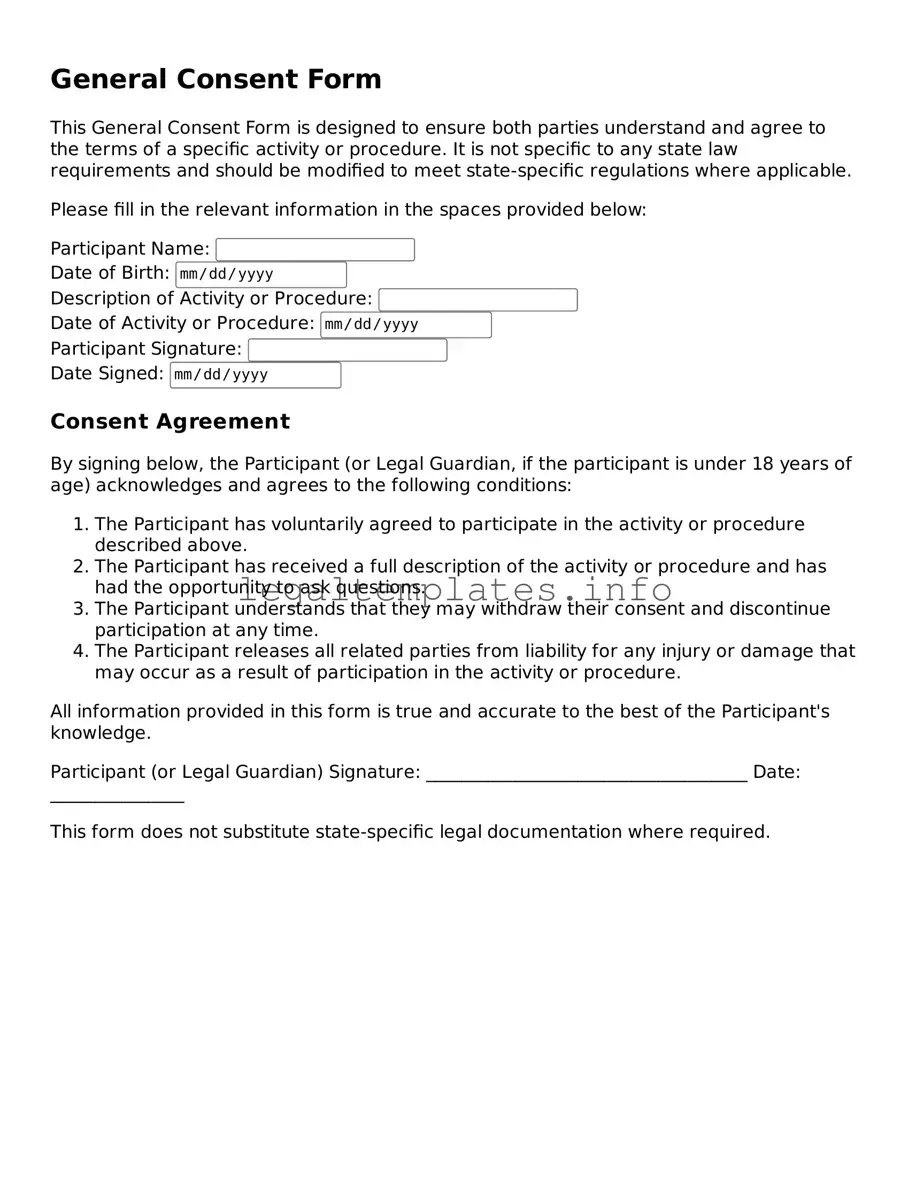What is a Consent Form?
A Consent Form is a document that outlines the information a participant needs to make an informed decision about participating in a specific activity, procedure, or research study. It confirms that the participant voluntarily agrees to proceed with the activity under the outlined conditions.
Who needs to sign a Consent Form?
Generally, the individual participating in the activity, procedure, or study needs to sign the Consent Form. If the participant is under the age of 18 or unable to consent for themselves due to other reasons, a parent, guardian, or legal representative will need to sign on their behalf.
What information should be included in a Consent Form?
A comprehensive Consent Form should include a detailed description of the activity or study, including its purpose, procedures, any associated risks, benefits, and the duration. It should also detail any compensation, confidentiality measures, and the participant's rights, including the right to withdraw from the activity at any time without penalty.
Why is a Consent Form important?
A Consent Form is crucial for ethical and legal reasons. It ensures participants are fully informed about what they're agreeing to, protecting both the participant and the organization conducting the activity. It serves as evidence of informed consent, which is necessary for any activity that carries potential risks to the participants.
Can Consent Forms be modified?
Yes, Consent Forms can be modified to fit the specific needs of an activity or study. However, any modifications should not compromise the clarity or completeness of the information provided to the participant. All changes must also be approved by relevant authorities, such as an Institutional Review Board (IRB), if applicable.
What happens if a participant decides to withdraw consent?
If a participant decides to withdraw consent after signing the Consent Form, they have the right to do so at any point. The procedure for withdrawal should be outlined in the Consent Form, including any potential consequences or lack thereof for withdrawing. The participant's decision must be respected and acted upon promptly.
How long should the signed Consent Form be kept?
The duration for keeping signed Consent Forms depends on the governing laws and regulations, as well as the policies of the organization conducting the activity. However, it is generally recommended to keep these documents for a minimum of three years after the conclusion of the activity or study. For research involving minors, it's advisable to keep the forms until the participant reaches the age of majority plus a few years, depending on local regulations.
Is verbal consent acceptable as a substitute for a signed Consent Form?
While verbal consent may be acceptable in some situations, most formal activities, procedures, and research studies require written consent to ensure that all legal and ethical standards are met. Written consent provides clear evidence of the participant's understanding and agreement, which is crucial for protecting all parties involved. However, in cases where written consent is not feasible, obtaining verbal consent should be documented as thoroughly as possible.
